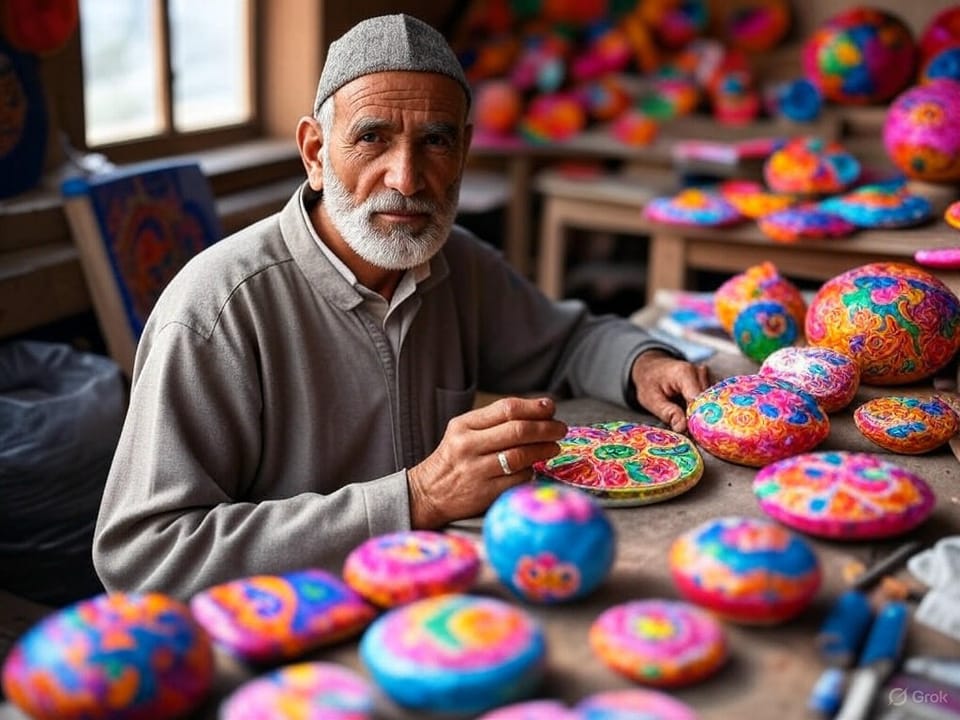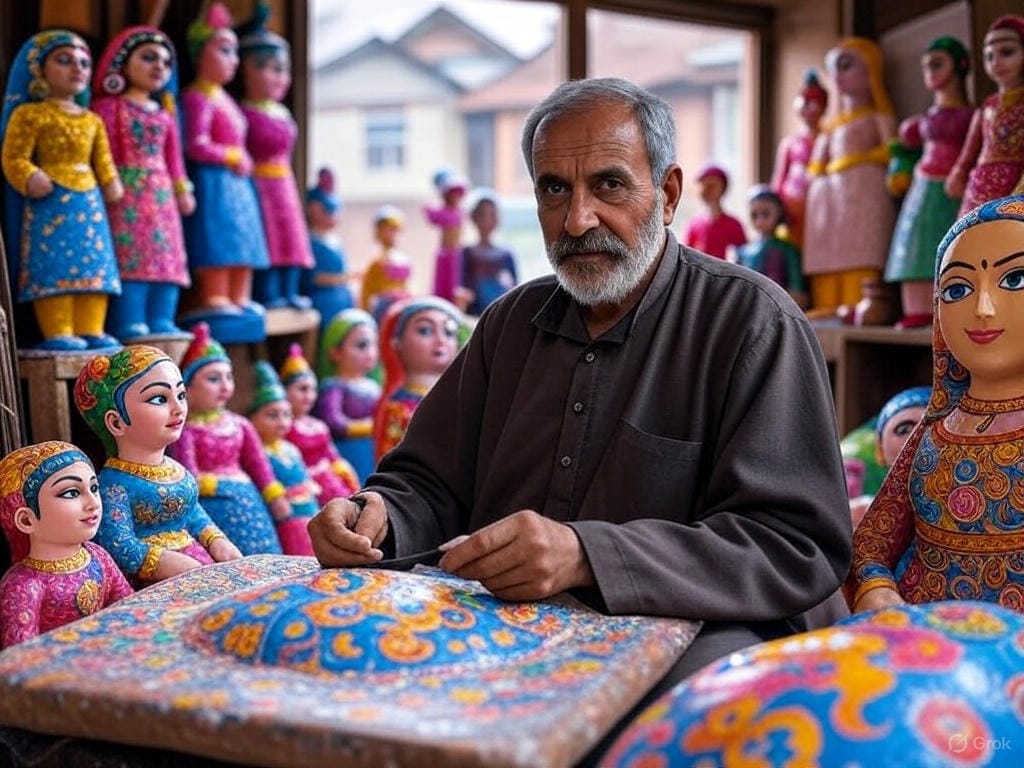The Art of Kashmiri Papier-Mâché

Introduction
Kashmiri papier-mâché is a centuries-old craft that showcases the intricate artistry and cultural heritage of the Kashmir Valley. Renowned for its vibrant colors, delicate patterns, and meticulous craftsmanship, this art form transforms simple materials into exquisite decorative objects, ranging from boxes and trays to ornaments and furniture. The craft is a testament to the creativity and skill of Kashmiri artisans, who have preserved this tradition through generations.
History and Origins
The origins of Kashmiri papier-mâché can be traced back to the 15th century, influenced by Persian artisans who introduced the technique to the region during the reign of the Mughal emperors. The term "papier-mâché" comes from the French words for "chewed paper," reflecting the process of creating a moldable material from paper pulp. In Kashmir, the craft evolved into a unique style called kar-i-kalamdani (pen-case work), initially used to decorate writing cases for scholars and poets. Over time, it expanded to include a wide range of objects, blending Persian motifs with local Kashmiri aesthetics.

The Crafting Process
Creating Kashmiri papier-mâché is a labor-intensive process that requires patience and precision. The steps include:
- Preparing the Base: Artisans start by shaping a mold, typically made from wood or cardboard, to form the desired object, such as a box or vase.
- Applying Paper Pulp: Layers of soaked, pulped paper are applied to the mold and bound with adhesive, often a starch-based glue. This creates a sturdy base.
- Smoothing and Priming: Once dried, the surface is smoothed with a layer of gypsum and glue, preparing it for painting.
- Painting and Decoration: The object is painted with a base color, followed by intricate hand-painted designs. Common motifs include floral patterns, paisleys, chinar leaves, and scenes from Kashmiri folklore. Gold or silver leaf is often used to add a luxurious touch.
- Lacquering: A final coat of varnish or lacquer is applied to protect the design and give the piece its signature glossy finish.
The entire process can take weeks, depending on the complexity of the design and the size of the object.
Cultural Significance
Papier-mâché is more than just a craft in Kashmir; it is a cultural emblem that reflects the region’s artistic heritage and connection to nature. The motifs used in the designs often draw inspiration from Kashmir’s lush landscapes, with flowers like lotuses and roses symbolizing the valley’s beauty. The craft also holds economic importance, providing livelihoods for many artisans in Srinagar and surrounding areas. It is a popular souvenir for tourists and a cherished item in Kashmiri households, often passed down as heirlooms.
Modern Adaptations and Challenges
In recent years, Kashmiri papier-mâché has adapted to contemporary tastes, with artisans experimenting with new shapes, colors, and minimalist designs to appeal to global markets. However, the craft faces challenges, including competition from machine-made products and a decline in the number of skilled artisans. Efforts are underway to preserve this tradition through training programs and government support, ensuring that the art form continues to thrive.
Conclusion
Kashmiri papier-mâché is a vibrant expression of the region’s artistic soul, blending history, skill, and beauty into every piece. Whether displayed in homes or admired in museums, these creations tell the story of Kashmir’s enduring creativity. Visitors to the valley can explore this craft in Srinagar’s bustling markets, where artisans continue to breathe life into this timeless tradition.
Learn more about Kashmiri crafts on kashmir.wiki or visit local artisan workshops in Srinagar to witness the magic of papier-mâché firsthand.